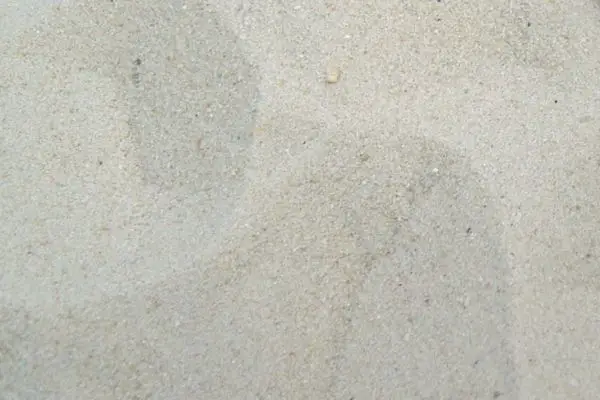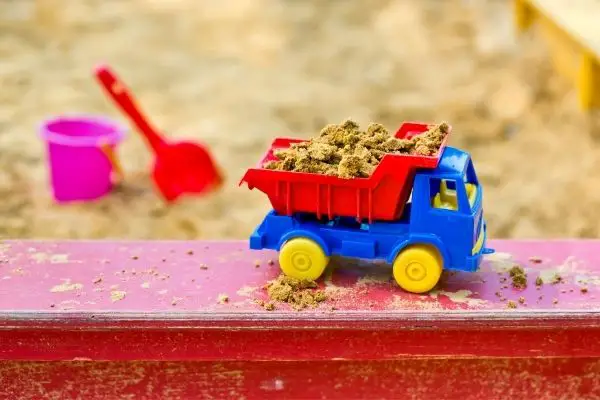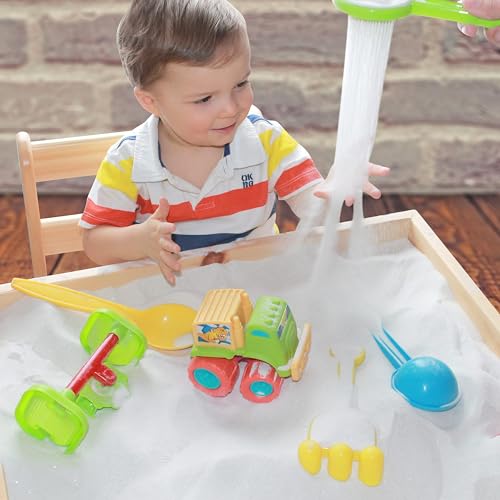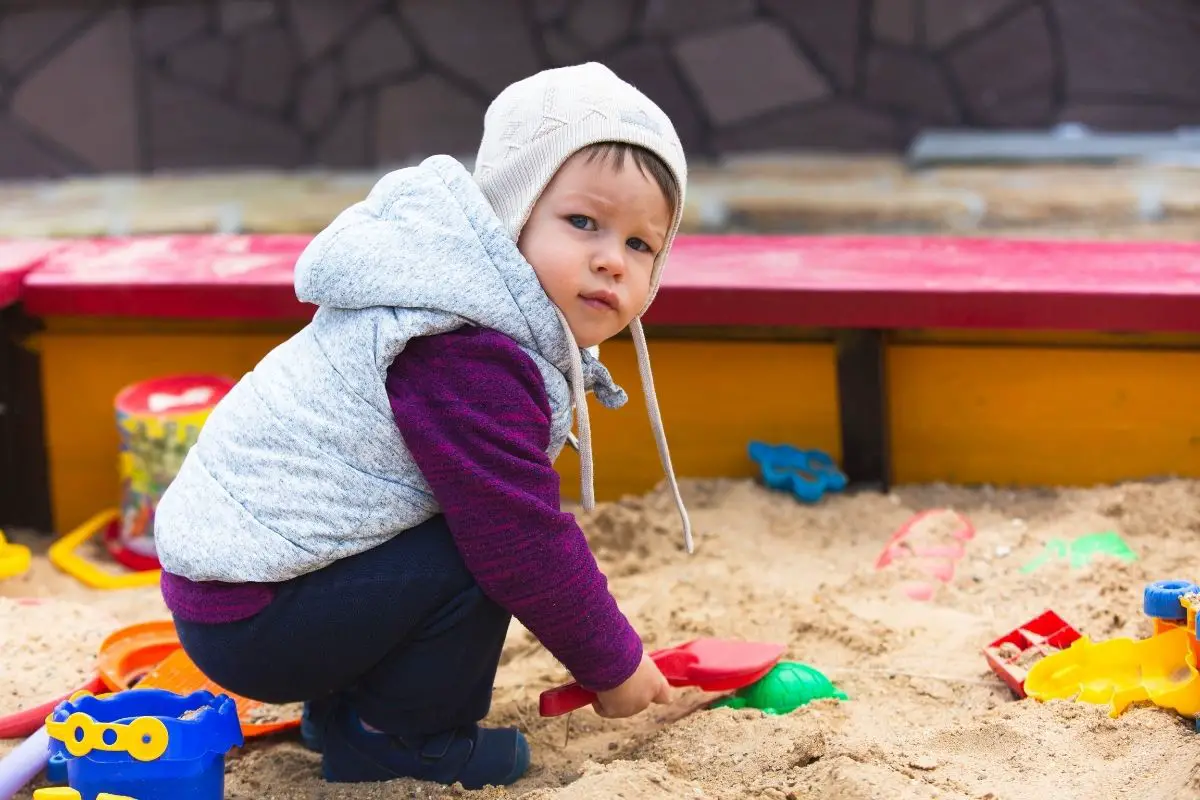Is Masonry Sand Safe For Sandboxes AND Play Areas?
When I became a parent and my children asked for a sandbox, I quickly learned that not all sand is equal. I am one of those lucky people who are married to someone quite ‘ hands-on’ and skilled enough to carry on DIY projects around the house. Sand has always been a common material in our household!
Then, the request for an actual sandbox came!
Do I buy the cheapest sand available – as you often need a decent amount to fill even the smallest sandbox?
Quickly, I realized it’s not just about finding the cheapest sand available to fill the new sandbox. You also need to worry about things like safety when choosing the right sand for your children’s playtime.
Masonry sand (also called mortar sand) is often advertised as “all-purpose” sand. Yet it’s not necessarily the safest option for a child’s sandbox.
So should you opt for the more expensive option and fill your children’s sandbox with specialty play sand? Or is using masonry sand for a sandbox a safe enough alternative?
Let’s explore the key differences between mason sand vs play sand so you can make the most informed decision possible for your family!
What’s The Difference Between Masonry Sand Vs Play Sand?

At first glance, masonry sand and play sand are very similar.
But even the smallest differences matter when deciding if it’s safe to use mortar sand for a sandbox or other children’s play area.
Uses
Of course, the greatest difference between masonry sand and play sand is how each type of sand is used.
Masonry sand is commonly used to make smooth concrete and mortar for brick-laying. It is also used to fill volleyball courts and playgrounds.
Play sand is used almost exclusively in sandboxes.
Grain Size
Masonry sand is one of the finest construction sands available. However, play sand is even finer. These extremely small grains make play sand more comfortable to sit and play in. They also give play sand its trademark moldability.
Source
Nearly all commercial sand comes from quarries, or rock mines. Masonry sand and play sand often come from the same quarries, though play sand tends to go through more thorough processing.
Contents

The exact makeup of a particular sand will depend on the rocks present in the quarry. Limestone, quartz, and granite are some of the most common rocks used to make sand.
One of the biggest issues concerning sand safety is the presence of crystalline silica. Crystalline silica is a natural byproduct of mining quartz.
Inhaling crystalline silica is a serious concern when engaging in activities like sandblasting. There’s little evidence that children are at risk of inhaling these particles when playing in a sandbox.
Both masonry sand and play sand can contain crystalline silica. However, there are varieties of play sand available that claim to be silica-free.
Availability
Masonry sand and play sand are available from a variety of retailers. You can purchase both types of sand online, at your favorite hardware store, or through a local gravel and sand supplier.
Specialty play sand, including silica-free formulas, may be harder to find. Check with local retailers to see what brands they carry.
Is Masonry Sand Safe for a Sandbox?

Realistically, there is not a huge difference between high-quality masonry sand and your average play sand.
Masonry sand is relatively safe for use in a sandbox. Many parents use masonry sand in their children’s sandbox without issue. But it is not the safest option out there.
What Type of Sand is Best for a Sandbox?
Play sand from a trusted source will always be the best sand to use in a sandbox. Parents looking for the absolute safest option for their children’s sandbox should invest in silica-free play sand.
While the sand itself might not be much different than a fine construction compound like masonry sand, play sand is processed from start to finish with children’s safety in mind.
Frequently Asked Questions
Can you use play sand instead of masonry sand?
The answer to this question depends on who you ask. While some amateur (and even some professional) masons see no issue using play sand vs mason sand, it’s not always an even swap.
You can make concrete out of play sand. This mixture can be used as a mortar — just like masonry sand — but the finer grains mean the finished product is more likely to crack or shrink over time.
You can technically use play sand to fill in around pavers or for other common construction projects. Again, play sand’s fine texture means it is more likely to wash away or settle over time.
For the best results, you should always use the recommended type of sand for your specific project. While using play sand instead of masonry sand might save you a trip to the hardware store, there’s a good chance it will affect your project’s durability and/or longevity.
How do you make play sand less dusty?
Because of its ultra-fine particles, play sand is infamous for producing more dust than other types of sand. Some parents worry that this quality increases the risk of inhaling harmful rock particles.
You can limit the amount of dust in your child’s sandbox by keeping the sand slightly damp at all times. It’s also good practice to regularly mix the sand so that larger particles don’t settle to the bottom of the box.

Why is play sand so expensive?
Countless parents opt for masonry sand over play sand because it is more affordable. The reason play sand is one of the most expensive types of sand available is because of the processing it goes through.
Play sand is washed and screened to remove large particles of sand. This results in the extremely fine texture play sand is known for.
Many brands of play sand also take extra steps to clean and test their sand for safety. This extra peace of mind comes at a small additional cost.
How often should you change sand in a sandbox?
No matter how careful you are, the sand in a sandbox will never be 100% sanitary. Replacing the sand in your child’s sandbox is the best way to ensure their play area is as clean and safe as possible.
Some sources suggest replacing play sand as often as every 6 months. Others recommend replacing sand at least every other year.
Don’t hesitate to replace your child’s play sand more frequently if the sandbox is used extremely often or you believe it may have been contaminated. This is also a good way to check the sandbox for sharp objects or other dangerous items that might make their way into the sand.
Last update on 2024-04-09 / Affiliate links / Images from Amazon Product Advertising API





